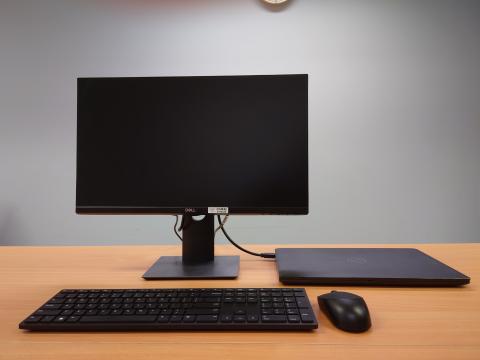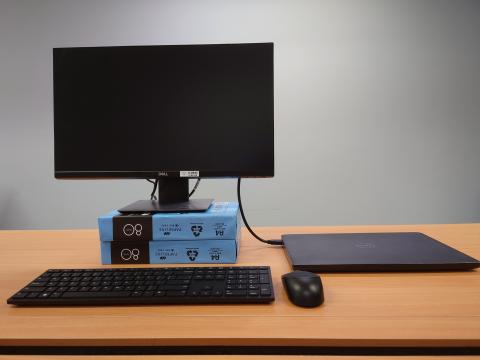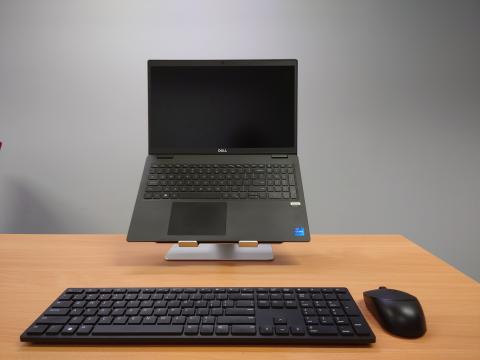Use of Portable Computers
A laptop or notebook is lightweight, portable, and convenient. However, its compact design, with an attached screen and keyboard, forces users into awkward postures which are associated with some ergonomic risks, such as neck and shoulder pain, computer vision syndrome, and wrist pain.
To reduce the ergonomic risk, some setup modifications can be made for a portable computer workstation:
- Connect an external, adjustable monitor (Fig. 6a) or monitor (Fig. 6b) placed on a stable support surface, such as monitor risers, reams of paper, or phone books, so that the screen height can be adjusted.
Fig. 6a
Fig. 6b
- A laptop stand is highly recommended if an external monitor is not available (Fig.7a and 7b).
Fig. 7a
Fig. 7b
- Maintain a neutral neck posture by adjusting the screen height (refer to Height of Monitor Screen)
- The ergonomic requirements of a laptop computer workstation should match with the standard workstation.
< Guidelines for Setting Up and Working at a Proper Computer Workstation


